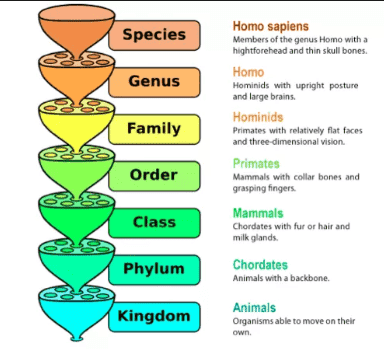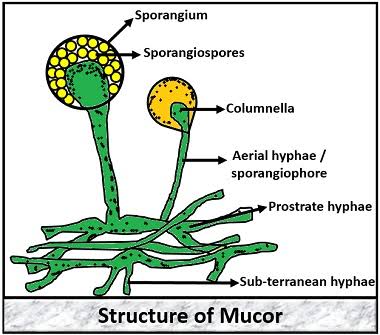Ranunculaceae | Ranunculaceae Family | Ranunculaceae family plants
You must be knowing different types of classification for angiospermic plants in your previous units. The classification used in Indian subcontinent is that proposed by Bentham and Hooker. In Genera Plantarum, Bentham and Hooker discussed 163 families under dicotyledons. Economic importance of each family is also discussed in some detail.The dicotyledons include all those angiosperms in which the embryo possess two cotyledons, leaves with reticulate venation and vascular bundles are open and arranged in one or more rings. These plants have secondary thickenings in the stems. Due to the presence of the cambium. These plants may be either herbaceous or woody, having pentamerous flowers. They posses persistent primary root that develop into tap root.
Ranunculaceae Family, Caryophyllaceae and Rutaceae belong to Polypetalae (Petals are free and flower with Calyx and Corolla) group. Of them Ranunculaceae family and Caryophyllacee belong to SeriesThalamiflorae (Polysepalous, petals hypogynous) while family Rutaceae belongs to Disciflorae (Thalamus expanded into a disc , ovary superior).
The members of the subclass Polypetalae contain flowers with free petals and their perianth is usually in two whorls i.e. calyx and corolla . Polypetalae divided into 3 series e.g, Thalamiflorae, Disciflorae and Calyciflorae. Series Thalamiflorae is characterized by
(i) Usually distinct sepals free from ovary
(ii) presence of many stamens
(iii) Hypogynous flowers
(iv) superior ovary and
(v) Absence of disc
Thalamiflorae includes 6 cohorts (= orders) and 34 orders (= families) Series Disciflorae is characterized by
(i) distinct or united sepals free or adnate to ovary
(ii) stamens hypogynous,
(iii) usually definite flowers
(iv)superior ovary and
(v) presence of disc. Disciflorae includes 4 cohorts ( = orders) and 23 orders (= families) Series Calyciflorae is charactrised by
(i) Usually inferior ovary
(ii) Usually free sepals and flowers or United perigynous or epigynous. It includes 5 cohorts ( = orders) and 27 orders (= families)
RANUNCULACEAE FAMILY
Bentham & Hooker included family Ranunculaceae under Ranales, one of the 8 orders (families). It is commonly known as Buttercup family. This follows the work of the Angiosperm Phylogeny Group.
Armen Takhtajan 1997 includes the Ranunculaceae as the only family in the Ranunculales which he placed in a subclass, the Ranunculidae, instead of a superorder. In 1992,Thorn placed the Ranunculaceae in the Berberidales, an order within the Superorder Magnolianae. In 1981, Cronquiest included the Ranunculaceae along with seven other families in the Rancunculales which was included in the Magnoliidae, which he regarded as a subclass.
Diagnostic characteristics -
Herbaceous leaves palmately divided, flowers with many stamens, gynoecium of many simple pistils, fruit an aggregate of achenes or follicles.
Distribution pattern
It is a large family and includes 50 genera and 1900 species. It is mostly distributed in the temperate regions of the Northern Hemisphere. In India this family is represented by 20 genera and 165 species, mostly confined to the Himalayan region of Pakistan and India.
Systematics
General Characteristics
Habit:
Annual or perennial herbs, rarely shrubs or vines (Clematis). Some species are aquatic herbs (Rannunculas aquatilis). The perennial species usually develop rhizome and tuberous root (Aconitum and Ranunculus)
Roots:
Tap as well as adventitious root, Tuberous root (Aconitum)
Stem:
Herbaceous (Rannunculas), woody (Paeonia) or climbing (Clematis) stem, develops rhizome
Leaves:
Usually basal and cauline, Petiolate. Usually exstipulate but stipulate in Ranunculus Alternate rarely opposite (Clematis). Simple, pinnately compound (Clematis), decompound (Thalictrum) some aquatic species show heterotrophy, reticulate venation. The leaves are modified into tendrils in Clematis aphylla and photosynthesis is carried out by the stem.
Inflorescence:
Inflorescence is variable. sometimes raceme (Aconitum), Dichasial Cyme (Rannunculas sp.), axillary (Clematis), solitary and terminal (Nigella)
Flower:
Rarely bractate, Pedicillate ebracteate hermaphrodite, unisexual in Thalictrum actinomorphic (Rannunculas sp.) rarely zygomorphic (Delphium), hypogynous, complete, pentamerous, Regular.The floral parts are arranged spirally on the elongated receptacle. An involucres of leaves is present outside the calyx.Calyx:
Sepals 5-8 which are distinct and usually deciduous, free, In Delphinium and Aconitum the sepals are petaloid and the posterior sepal is spurred. Aestivation is imbricate
Corolla:
5 or more petals or sometimes petals may be absent, polypetalous, variously colored, Sometimes, petals are changed into nectaries, In Delphinium the posterior pair of petals forms spur which projects into the spur of the sepal, another pair of the petal if present is very much reduced (Aconitum). In Clematis petals are altogether absent and sepals become petaloid.
Androecium:
Stamens are numerous, polyandrous. Stamens are Spirally arranged on the thalamus, In some genera (Nigella and Aquilegia) the stamens are arranged in definite rings, anthers adnate, dithecous, extrose, dehiscing longitudinally.
Gynoecium:
Numerous free carpels (Polycarpellary) arranged spirally on a distinct thalamus (one to three carpels in Delphinium), apocarpous rarely syncarpous (Nigella), ovary superior, one to several ovules in each ovary. Placentation basal or marginal.style and stigma one.
Fruits:
An etaerio of achenes or follicles, sometimes berry or capsule.
Seed:
Small, endospermic seed
Pollination:
Generally entomophilous
Floral formula
Important Genera
The familiar examples of the family are Delphinium (Larkspur) Thalictrum (Meadowrue) (Ranunculus (Butter-cup) Nigella (Kala-jeera), Anemone (Wind flower), Aconitum (Aconite)
Economic importance
1-Ornamental plants:
Most plants are cultivated for their beautiful flowers like Ranunculus (Buttercup), Thalictrum, Clematis etc.2-Medicinal plants:
Some members are used as medicinal plants. Aconitum napellus yields an alkaloid aconite used for rheumatism and as nerve sedative. Thallicirom yields mamira. It is used in the treatment of ophthalmia. Some species of Clematis are used as a remedy for leprosy and blood diseases. Juice of some sp, of ranunculus used for intermittent fever. Roots of Hydrastis canadensis are used as antidote of snake bite.3-Condiments:
Some members are used as condiments for flavoring. Seeds of Nigella (Black fennel, Kala jeera) are used as drug for bronchial asthma, fever and cough4-Importance for honey:
Most members of this family have nectaries. Flower nectaries have great importance for honey bees for honey production.
5-Poisonous species:
Some members of this family produce acrid juice. It is highly poisonous.Ranunculaceae family plants
The family, Ranunculaceae is also known as buttercup family, it's comprises about 2252 species in 62 genera of flowering plants. The members of this family are mostly herbaceous plants and distributed in worldwide. The flower of Ranunculaceae family show five or more petals and numerous pistil and stamens. Many species of Ranunculaceae family are used as ornamentals.
List of Ranunculaceae family plants is as follow:
- buttercup (genus Ranunculus)
- clematis (genus Clematis)
- columbine (genus Aquilegia)
- globeflower (genus Trollius)
- goldenseal (Hydrastis canadensis)
- hellebore (genus Helleborus)
- Christmas rose (H. niger)
- hepatica (genus Hepatica, sometimes placed in Anemone)
- larkspur (genus Delphinium)
- love-in-a-mist (Nigella damascena)
- marsh marigold (Caltha palustris)
- meadow rue (genus Thalictrum)
- monkshood (genus Aconitum)
- mousetail (genus Myosurus)
- pheasant’s-eye (Adonis annua)
- winter aconite (genus Eranthis)























0 Comments
If you have any query let me know.